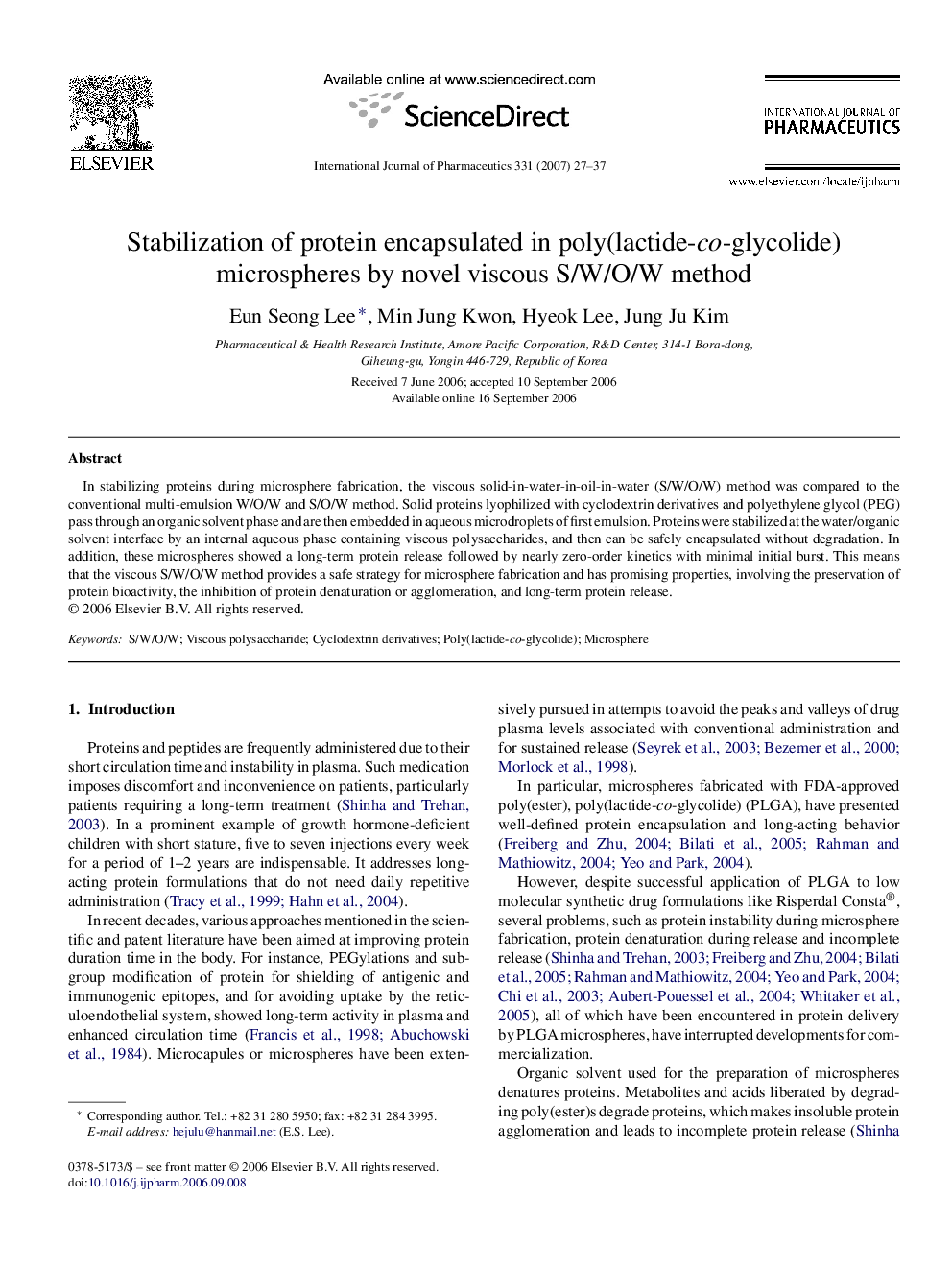| Article ID | Journal | Published Year | Pages | File Type |
|---|---|---|---|---|
| 2506448 | International Journal of Pharmaceutics | 2007 | 11 Pages |
In stabilizing proteins during microsphere fabrication, the viscous solid-in-water-in-oil-in-water (S/W/O/W) method was compared to the conventional multi-emulsion W/O/W and S/O/W method. Solid proteins lyophilized with cyclodextrin derivatives and polyethylene glycol (PEG) pass through an organic solvent phase and are then embedded in aqueous microdroplets of first emulsion. Proteins were stabilized at the water/organic solvent interface by an internal aqueous phase containing viscous polysaccharides, and then can be safely encapsulated without degradation. In addition, these microspheres showed a long-term protein release followed by nearly zero-order kinetics with minimal initial burst. This means that the viscous S/W/O/W method provides a safe strategy for microsphere fabrication and has promising properties, involving the preservation of protein bioactivity, the inhibition of protein denaturation or agglomeration, and long-term protein release.
